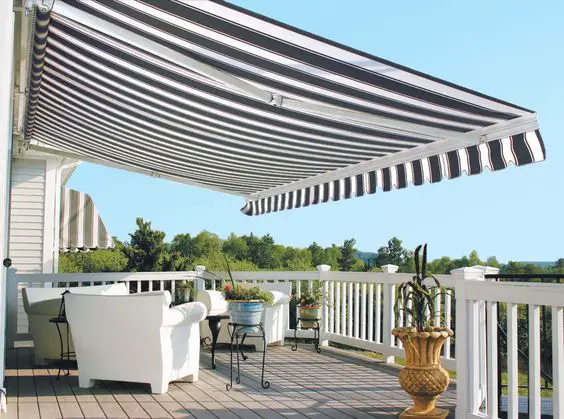Professional Patio Cover Installation and Outdoor Awnings Services

Patio cover installation typically involves attaching a roof or structure to the existing framework of a patio or deck to provide shade and protection from the elements. The materials used for a patio cover can include wood, aluminum, vinyl, or a combination of materials. The installation process will vary depending on the specific materials and design of the patio cover but generally involves measuring and preparing the area, attaching the framework and roofing materials, and making any necessary adjustments or repairs. It is best to hire a professional contractor for the installation process as it may require permits, building codes, and other legal requirements.
Patio cover installation typically begins with measuring the existing patio or deck to determine the size and layout of the cover. This will help to ensure that the cover fits properly and provides the desired level of protection.
Next, the framework for the patio cover is constructed. This can include posts, beams, and rafters, depending on the design of the cover. These structural elements are typically made from wood or aluminum and are anchored to the existing patio or deck using brackets or other fastening methods.
Framework
After the framework is in place, the roofing materials are installed. This may include shingles, tiles, or panels made from aluminum, vinyl, or other materials. The roofing is attached to the framework using nails, screws, or other fasteners. In addition to providing shade and protection, the roofing will also help to keep rain and other precipitation from getting into the patio or deck area.
Finally, any necessary adjustments or repairs are made to the patio cover. This may include adding flashing to prevent leaks or making sure that the cover is properly aligned and level. Once the installation is complete, the patio cover should stand strong, and stable, and provide the desired level of protection from the elements.
Professional Contractor
It is recommended to hire a professional contractor for patio cover installation, as they will have the experience and knowledge to ensure that the cover is built to code and that it is safe and stable. They will also have the necessary tools and equipment to complete the job quickly and efficiently.
Outdoor awnings are shading structures that are attached to the exterior of a building. They can be made of various materials such as canvas, acrylic, or polyester and are typically mounted on a frame made of aluminum or steel. Awnings are used to provide shade and protection from the sun, rain, and wind on patios, decks, and windows. They can also enhance the appearance of a building and add value to a property. There are different types of awnings such as retractable, fixed, and motorized, each with its own set of features and benefits.
Outdoor awnings come in a variety of styles and designs and can be customized to match the architecture of a building or to complement the surrounding landscape. Awnings can be installed over windows, doors, patios, or decks and can be used to create a cozy, protected outdoor living space.
Retractable Awnings
Retractable awnings are a popular choice because they can be easily extended when needed and retracted when not in use. This allows for flexibility and control over the amount of shade and protection provided. Retractable awnings can be operated manually or by remote control, and some even have sensors that will automatically retract the awning when it becomes too windy.
Fixed awnings are a more permanent solution and are typically used to provide shade over a patio or deck. They can be made with a variety of materials, including canvas, acrylic or polyester, and are available in a variety of colors and patterns.
Motorized awnings are another popular option that allows for easy and convenient operation, which can be controlled remotely or even integrated with smart home systems.
Outdoor Awnings
Overall, outdoor awnings are a practical and stylish solution to provide shade and protection from the elements and can be a great addition to any home. Additionally, awnings can also help lower energy costs by reducing the amount of heat that enters a building and can help to protect furniture, carpets, and floors from fading due to sun exposure.
Outdoor awnings can also be used in commercial settings such as restaurants, cafes, and shops to provide shade and comfort for customers. They can also be used to create an outdoor dining area or to cover a walkway or entrance.
In addition to providing shade and protection, outdoor awnings can also be used to enhance the aesthetic of a building or commercial space. Many awning manufacturers offer custom designs and branding options, allowing businesses to create unique and eye-catching awnings that can help to attract customers.
Materials and Design
When choosing an outdoor awning, it is important to consider the size and location of the awning, as well as the materials and design. It’s also important to consider the climate, as certain materials and designs may be more suitable for specific weather conditions.
Another important consideration is the installation of the awning, as it’s typically best to hire a professional to ensure that the awning is installed correctly and safely. A professional will also be able to advise on the best type of awning for your specific needs and requirements.
In summary, Outdoor awnings are a versatile and practical solution that can provide shade and protection, enhance the appearance of a building and increase the value of a property. They are available in various types, styles, and designs, and with proper selection, installation and maintenance, they can last for many years.

